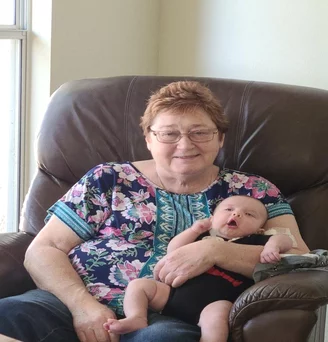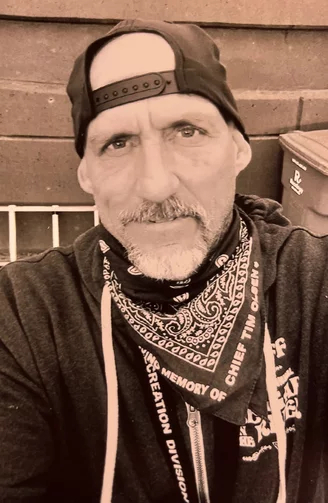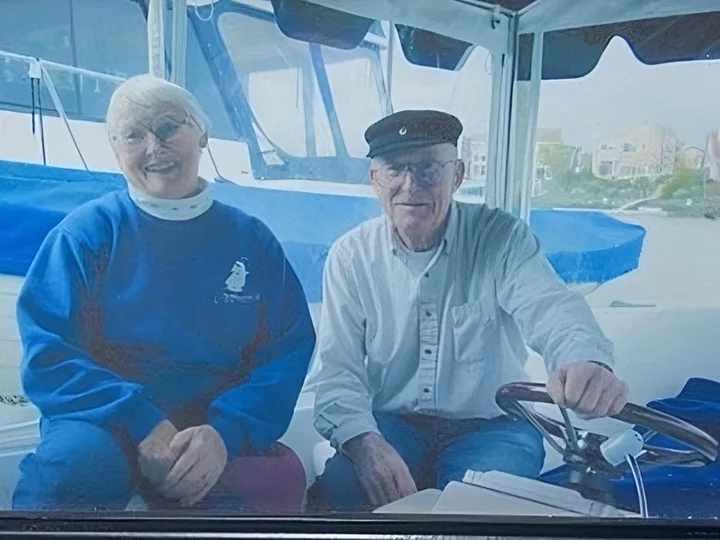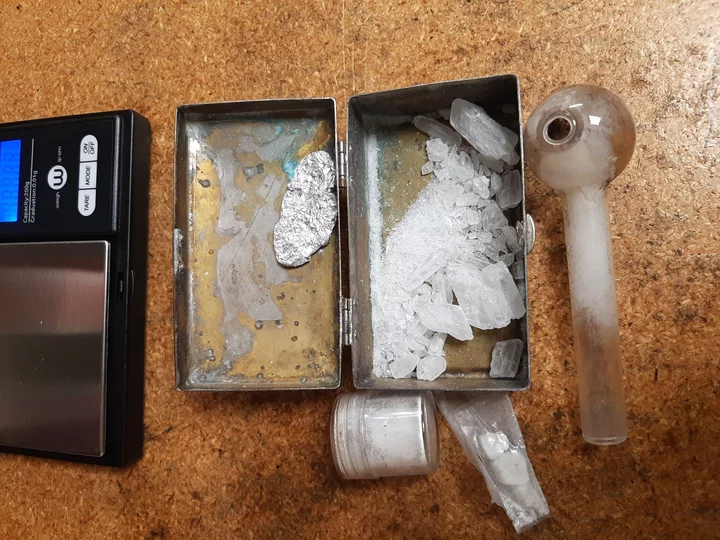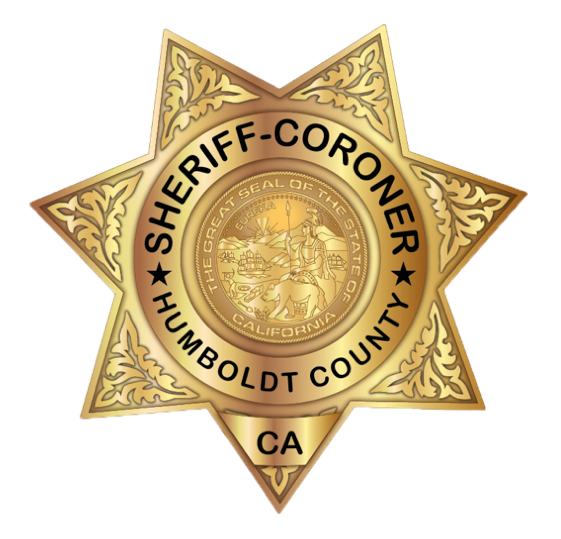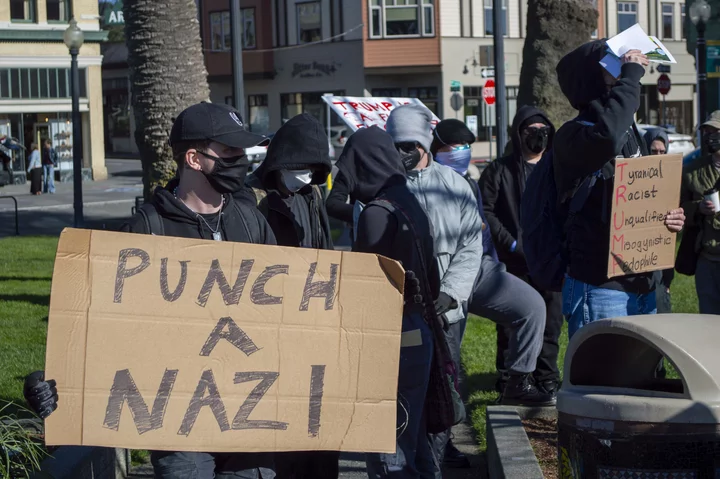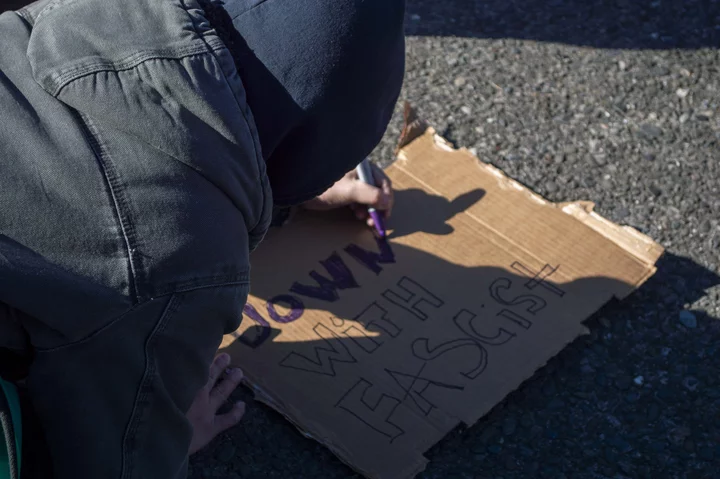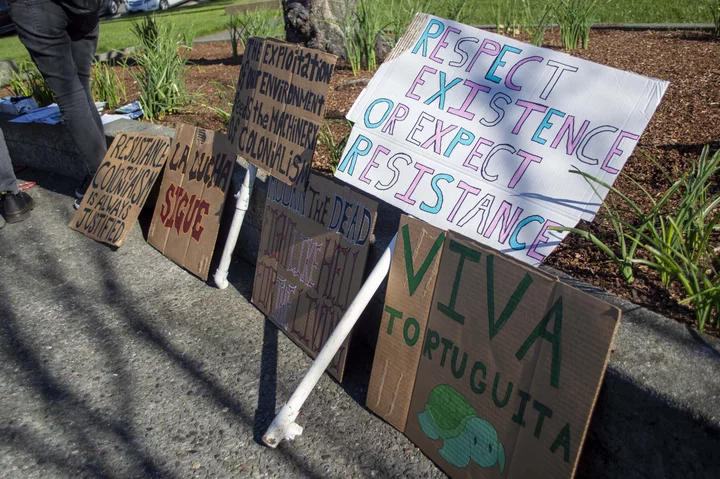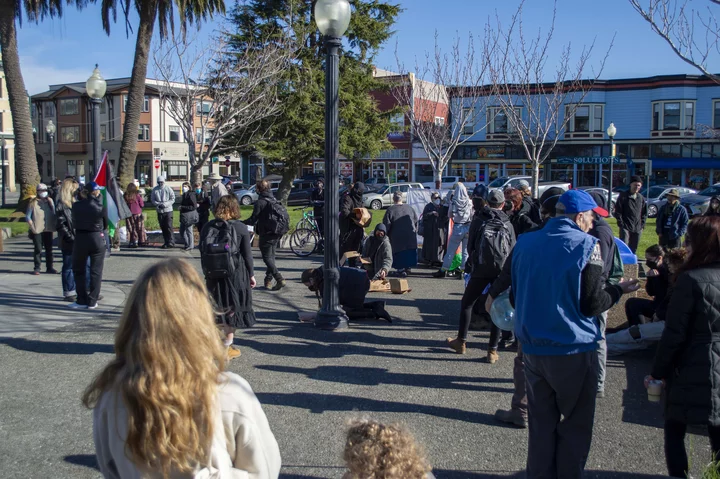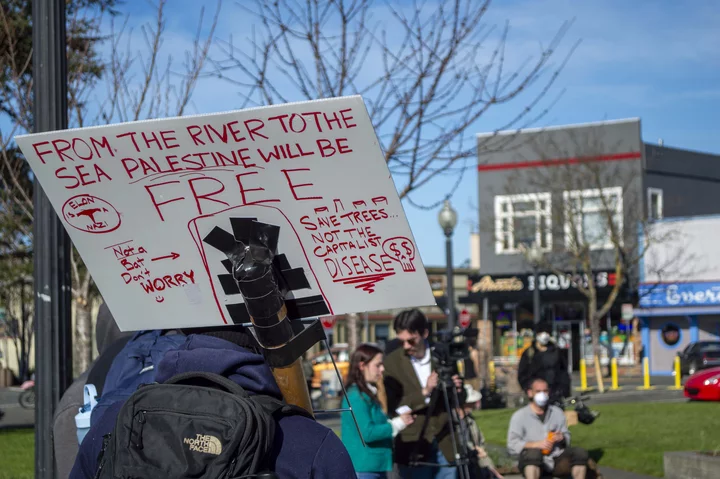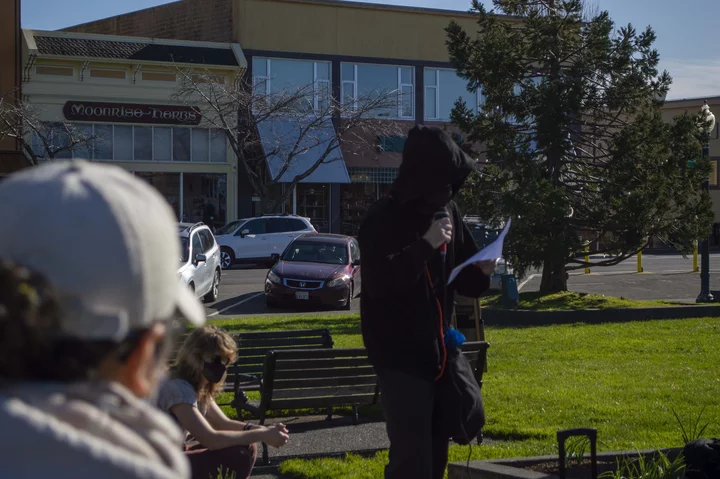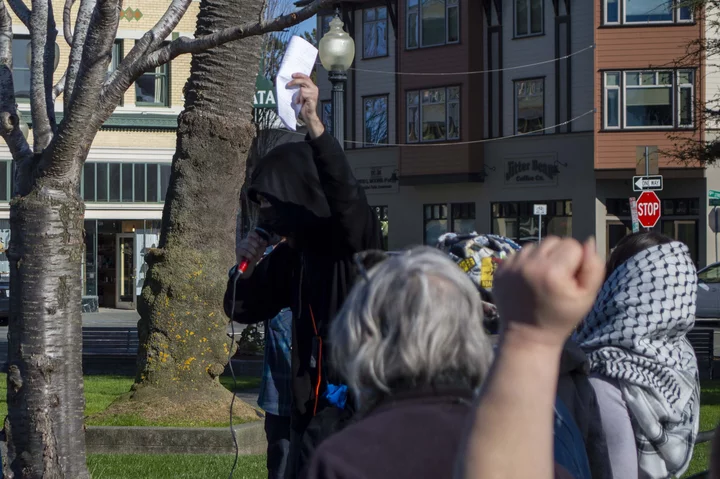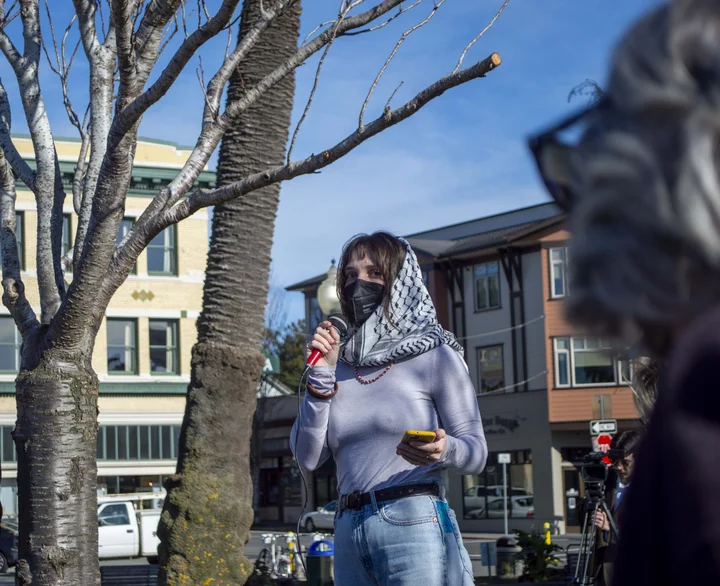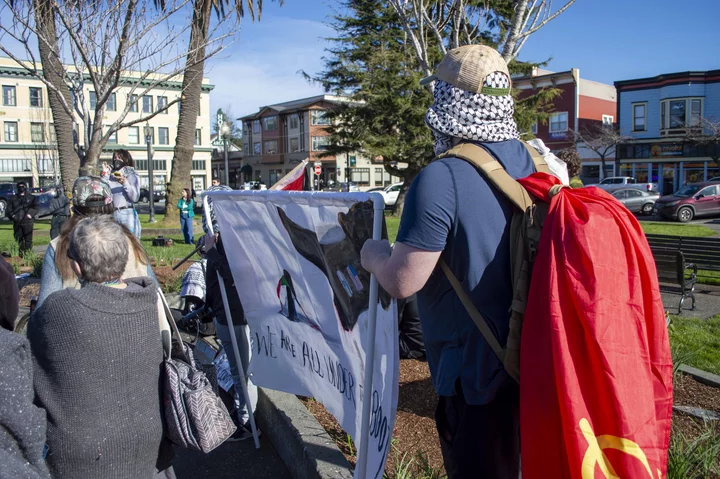OBITUARY: Barbara Ann Coutant, 1951-2025
LoCO Staff / Wednesday, Jan. 22, 2025 @ 6:56 a.m. / Obits
On July 10, 1951 this world received an angel. On January 7, 2025 that angel got her wings and we got an angelic star in the Heavens. Barbara Ann Coutant went home to be with her heavenly Father and passed family. Barbara passed at St. Joseph Hospital in Eureka surround her husband, Bill; son Jon Hughes (Kelly); daughter Heather (Richard); grandson Chris (Mercedez); granddaughters Jessica and Jordynn; daughter Nora; Bill’s sister Tami Shaw; nephew Joshua Shaw.
Barbara was the first born of James and Nancy Ross in Fairfield. Barbara grew up in many places because her father was a civil engineer for a large construction company. His work took the family all over the country. Barbara graduated from Carlisle High School in Pennsylvania in 1969. She moved to Long Beach to go to college. She married her first husband and moved to Iowa. They had two children Jon and Heather Hughes. They divorced after heather was born. Barbara, Jon and Heather moved to Virginia for work. When the work did not work out she sent Jon and Heather to live with her ex-husband and moved to Sterling City to help her aunt take care of her grandmother. Her grandmother got better and Barbara moved to Napa looking for work and lived with her aunt Lola and Garry Ross.
While in Napa, Barbara met Bill Coutant, He became the love of her life. They marred on June 29, 1985 and spent 39½ wonderful years together. In 1998 they moved to McKinleyville. That year she was diagnosed with cancer. She had several surgeries, radiation and chemotherapy. She beat the cancer. But the radiation damage was not diagnosed until years later. In 2020 she was diagnosed with end stage renal disease causing her to start dialyses.
Barb was a survivor, and started home hemodialyses, with Bill as her caregiver. They were able to travel with this system. We went camping, flew to Denver, Texas, Nashville and Claremore. Barb loved life and family. She was known to many as Aunt Barb. She loved to sewing, tole painting and many more hobbies.
Barb loved to cook. Barb was the first one to volunteer to cook incredible meals to feed an army. Why cook for two when she could cook for 10 or 20? When Lauren, her niece, got married she was up making gallons of gravy and biscuits for a hungry crowd for breakfast at Larry and Mel’s house. When she and Bill would come for Thanksgiving Barb always had a special dish to make. That is where we learned to like Brussels sprouts!
In 1964, Barb transition made the seamless from favorite babysitter to big sister of Penny (Howard) and Tim (Ross). As big sister, she helped them over the years make sense of hard decisions needed her. Their parents had to make, provided counsel for life events, and always had room in her heart.
As Aunt Barb to Penny’s two daughters, she made time to do fun things like actually play on the equipment with the girls at the Exploratorium in San Francisco. She made gifts and listened to them as if what they had to say was important (because to them, it was).
It was obvious to all who knew her that Barb had room in her heart for so many, because she only had love in her heart, and with love, there is always room for more people.
Barb, may you now be free of pain in heaven. We love you to the moon and back forever and ever.
In lieu of flowers the family asks that donations be made to the American Cancer Society or Hospice of Humboldt, and please get scanned for cancer.
Services will be held on February 8, 2025 at 11 at the Church of Latter-Day Saints located at 1660 Heartwood Dr., McKinleyville.
###
The obituary above was submitted on behalf of Barbara Coutant’s loved ones. The Lost Coast Outpost runs obituaries of Humboldt County residents at no charge. See guidelines here. Email news@lostcoastoutpost.com.
BOOKED
Today: 8 felonies, 6 misdemeanors, 0 infractions
JUDGED
Humboldt County Superior Court Calendar: Yesterday
CHP REPORTS
Elk Valley Rd / Beckett Ln (HM office): Trfc Collision-1141 Enrt
Us199 / Walker Rd (HM office): Traffic Hazard
ELSEWHERE
RHBB: Driver Trapped After Seizure Reportedly Leads to Crash at Fourth and I Streets in Eureka
Mad River Union: APD: Arcata declares State of Emergency
OBITUARY: Steven Blair, 1955-2024
LoCO Staff / Wednesday, Jan. 22, 2025 @ 6:56 a.m. / Obits
We are deeply saddened that on Dec. 1, 2024, Steven Blair passed away at home in Eureka after a long battle with cancer. His wife Linda, of 44 years, and son John were by his side. Steve was born July 22, 1955, in Madison, Wisconsin to Ed and Mynn Blair. He was raised in the Madison and Sun Prairie area, graduating from Sun Prairie High School in 1973. His favorite place to escape to was his grandparents dairy farm. He remained best friends with some of his youth, Mark Wilson, and Steve McQuinn to the end. Steve also attended at Madison Area Technical College.
He started a long migration across the country from Wisconsin, starting in Texas, where he worked his way from shop worker and maintenance to a millwright, welder, and foreman, building everything from satellite dishes to drag lines to oil derricks. He would come home just drenched in sweat from the heat and humidity. Moving to cooler temps on the West Coast, he worked as a welder in Port Angeles, Washington, on to lift maintenance at what is now known as Olympic Valley Ski Resort, at Tahoe, Ca., and learned to love skiing. On to Reno, Nevada, he worked for Nevada Dept. of Transportation as a welder and maintenance, and took part in their Engineer in Training program, allowing him to become an engineer. He also earned his Associate Degree at Western Nevada Community College and was a teaching assistant in welding there, which he truly enjoyed.
Once when he was a child, he had spun a globe to land on where he might want to live when he grew up, he landed on Humboldt, which made it fitting when he ended up working for CalTrans and the family finally settled for good in Eureka. Once here, he did not want to live anywhere else. He became a transportation engineer, eventually ending up as a project manager. He was proud of his involvement in various infrastructure projects around the state, especially with the Confusion Hill Bridge team, among many others.
Steve was a hard worker, honest and loyal, and ever an optimist. Everyone would say, “He was a good man”. He had long had medical battles; “Trying to stay ahead of falling apart” as he’d say, always enduring with his all. Until the end, he fought the cancer and was so hopeful he would beat it again. Some of his favorites were the song “Always Look on the Bright Side of Life” from Monty Python, all of the Beatles and Pink Floyd. He loved animals, especially the many dogs he’d had over the years, and is finally reunited with Harry, Sam and all the others. He loved traveling the world and experiencing new adventures. A passion of his was restoring his 1970 Mercury Cyclone - competition orange, which his son John, promises to finish. Steve was also a member of the Masons of California - Six Rivers Lodge #106.
He is survived by Linda and John, his mother Mynn Weffald, brother Gary Blair (Kathy) of Texas, sister JoAnne Simmerman of Alaska, brother David Weffald (Linda) of Colorado, and brother-in-law David Nelson (Bev) of Washington. Also many aunts, uncles, cousins, nieces and nephews from one coast to another. Preceded in death by his father Ed Blair of Wisconsin, step-father Don Weffald of Texas, Uncle Eddie Bateson of California-he was especially close to, and many other cherished family members.
No service is planned, but in Steve’s honor, please take a walk in nature, listen to some Pink Floyd, and most of all hug your family, friends, and animals. If you feel like contributing to a cause close to his heart, please consider your local animal rescue, Hospice of Humboldt, or World Central Kitchen.
A heartfelt thank you to the Palliative Care and Hospice of Humboldt, Ayers Mortuary, and all our friends, neighbors, coworkers and family. I can’t begin to tell you how much your kindness means. I found this saying amongSteve’s papers, and he would have liked to share it.
New Years’ Light
Light this candle to
remind us that Light defeats Darkness,
And to remind us of
those who have gone to the Light,
And to acknowledge
that good people bring Light with them,
And leave some when
they leave.
-Author Unknown
###
The obituary above was submitted on behalf of Steve Blair’s loved ones. The Lost Coast Outpost runs obituaries of Humboldt County residents at no charge. See guidelines here. Email news@lostcoastoutpost.com.
OBITUARY: Timothy Starke Lyman, 1963-2025
LoCO Staff / Wednesday, Jan. 22, 2025 @ 6:56 a.m. / Obits
Timothy Starke Lyman, aka Timbo /Tim, age 61, passed away on January
8, 2025, in his home in Arcata. His death was sudden.
Tim was born on October 15, 1963, in Altadena, Calif. He is survived by twin brother, Thomas I. Lyman. He is preceded in death by his parents, Frederic Pomeroy Lyman, III and Katherine Lee (Starke) Lyman.
Tim loved surfing, skateboarding, golfing, fishing and the Second Amendment. He also cherished and spoiled his dogs, Bug and Pupadero.
Tim went to high school in Santa Monica in the late 1970s. He completed two years of study at Landmark College in Vermont from 1990 to 1992, where after his studies he became a basketball and soccer coach for the special needs children and was highly acknowledged.
Tim had many accomplishments in life, including being a Red Cross disaster relief services worker. He has been an avid surfer since age 12. He also played softball in Malibu with his brother, Tom. He directed a DVD music video for “Shankar and Gingger - One in a Million” CD and was also the technical supervisor for it. He starred in a movie called “Dogtown & Z-Boys” about the 1970s skateboard culture, and was very involved in the movement itself.
Tim is well known in Humboldt and surrounding areas largely for being the security supervisor / coordinator for many years (20+) for music festivals and events near and far.
Tim has influenced so many people’s lives in his time here. He will continue to live on in many hearts and will be dearly missed.
A viewing for Tim will take place on Thursday, January 23, at Paul’s Chapel, 1070 H Street, Arcata. Private viewing for family is 12-1 p.m., and public viewing is 1-5 p.m..
A celebration of life will be held on the same day from 4-10 p.m. at Arcata Theatre Lounge.
###
The obituary above was submitted on behalf of Tim Lyman’s loved ones. The Lost Coast Outpost runs obituaries of Humboldt County residents at no charge. See guidelines here. Email news@lostcoastoutpost.com.
OBITUARY: Paul ‘Peewee’ David Schwartz, 1968-2024
LoCO Staff / Wednesday, Jan. 22, 2025 @ 6:56 a.m. / Obits
Paul “Peewee” David Schwartz
1968-2024
Paul was born Aug. 30, 1968 in Eureka to David and Nancy Schwartz.
We lost him unexpectedly on November 1, 2024 due to a seizure. Although we are all heartbroken we believe he is in a better place and not suffering anymore from alcoholism, which had really caught up to him in the last few years.
Paul was an only child, growing up as a “Army brat.” They lived in North Carolina, Oklahoma, Kansas, Germany, Washington and Eureka.
Paul has had many jobs throughout his life. He was “Pony Boy Paul,” a local DJ on the local radio in the 1990s, a car salesman at a few places, a furniture salesman at Sears, a DJ at the bowling alley and a service writer, just to name a few. He also was proud of the time he spent in the Army. Paul lived in quit a few places as an adult — Washington, Montana, Kentucky — but Eureka was always his home.
Paul has four children: Stacy, Kathryn, Miranda and Taylor. He also has five grandkids: Teagan, Ryker, Olivia, Max and Faylynn.
Paul was always up for a good time. Everyone was his friend. He just loved people and rarely met someone who he didn’t connect with or make laugh. He was a great entertainer to family and friends and anyone who’d pay attention. He was seen out many times dressed in his famous Peewee attire — red lips and cheeks to top it off! He won many Halloween contests and even won the “Pun Off” contest one year. He was an amazing bowler and bowled a 300 and got a ring to prove it. He also was a talented pool player. He would challenge anyone who was willing. Paul loved Karaoke and always sang his famous “mountain music,” where he’d always do the limbo and get down all the way to the floor while everyone chanted.
Growing up in Washington he was a loyal Seahawks fan until the end. He had a Seahawks logo tattooed on his arm to prove his loyalty.
Paul and his mom Nancy were very close, he spent many years of his life off and on living with her in their Bell Road house. Pee wee was also very close to his cousin Gretchen. In fact he hooked his friend Brad up with her on a Blind date New Years Eve 2000 and they’ve been together ever since. He always said “she owes him for that.”
Paul was a special soul and will be missed by his family and friends and a special friend in Montana whom he remained close to for years, “Markie Mark” he called him. Thx Mark for treating our Paul good! He had many friends whom we do not know names.
Paul is survived by his his dad, Lieutenant Colonel David Schwartz, and his stepmom Diane of Olympia, Washington, his mom Nancy Schwartz of Eureka, his aunt Sharon Wallenberg (Jay Dee) of Roseburg, Oregon.
His daughters Stacy Helwig (Danny) & Kathryne Schwartz also of Gillette, Wyoming, and Miranda VerColen of Great Falls, Montana, and his son Taylor Wallenberg also of Great Falls, Montana.
His five grandchildren Teagan, Ryker, Olivia, Max and Faylynn. His aunt Nancy Colbert (Gary), his cousins Carissa Ranario, Gretchen Curtice (Brad), Cora Williams (Ross) and William Wooster (Celia). He is also survived by many second cousins & aunts and uncles in Indiana.
He is proceeded in death by his grandpa Walter “Red”Schwartz, step-grandma Jane Schwartz, his grandma Dolores Willaby, his grandma Patricia Buffington and his step-grandpa Virlyn “Buff” Buffington.
RIP Paul! We love and miss you!
Considering Peewee spent a lot of his last year’s hanging out at Little Red Lion bar (1506 5th St., Eureka), We will be having a celebration of life on Saturday February 15th, 2025 at 5-7 p.m. for anyone who knew and loved Paul, Come celebrate Paul’s life with us. Snacks and beer will be provided.
Paul’s ashes remain in care of his loving family.
###
The obituary above was submitted on behalf of Peewee Schwartz’s loved ones. The Lost Coast Outpost runs obituaries of Humboldt County residents at no charge. See guidelines here. Email news@lostcoastoutpost.com.
OBITUARY: Nancy Lenore Farwell Gurley, 1930-2025
LoCO Staff / Wednesday, Jan. 22, 2025 @ 6:56 a.m. / Obits
Born: January 9,
1930, in St Joseph Children’s Hospital, Orange, Calif.
Died: January 4,
2025, in her sleep at home in McKinleyville
Nancy was the first
child of Lyman and Catherine Farwell of Santa Ana. Her father was a
farmer, investor, yachtsman, and businessman in the greater Los
Angeles region. Her mother was a happy wife, mother, fellow investor,
homemaker, yachtswoman and society matron.
She was born in Orange on January 9, 1930, she entered this world in the same hospital where, decades later, all four of her children would be born.
Nancy’s family raised orange trees on a 20-acre ranch with horses and other livestock in Santa Ana and later in Tustin. Nancy’s passion was riding across the fields and throughout the surrounding groves, and even west 20 miles to the waters and beaches of Balboa and Newport Harbor. The Farwells built a large New Orleans-style home on a Balboa peninsula property in 1936, next to properties her uncles owned and where they had built houses. That kept the Farwell families close, and anytime the cousins could play together by simply jumping the bulkheads separating them. Her entire family were experienced yachtsmen and sailors, cruising and racing the west coast from Canada to Mexico, stopping up and down the coast in all harbors for rest, even into Humboldt Bay, Trinidad Harbor and at Crescent City many times. Her father owned a series of yachts cruising to Catalina Island for weekends throughout the years, participating in several sailing races to Acapulco and the Hawaiian islands. Nancy joined as crew with her husband many times.
Nancy primary and high schooled in Southern California until going to Stephens College in Missouri in 1948-50, earning her AA degree. She started attending USC, until meeting her handsome and gentlemanly naval aviator husband, Robert Whiting Gurley, in autumn 1950. They married in 1951, honeymooning on Oahu in Hawaii, at the Royal Hawaiian. Robert was the only man for her.
Together they raised their four children on a 40-acre orange ranch south of Tustin, until selling in 1969, and moving to a new 80-acre citrus ranch near Indio. They successfully put all four children through college.
In 1978 they sold the desert ranch and moved to a small 3-acre avocado farm near Fallbrook, Calif. As 1988 arrived they sold again and with all the kids out on their own, moved back to Newport Beach to be near family, business interests, and friends. In 1995, since all four children had moved to Northern California, they decided to move north to a riverside dream home in Napa, to be closer and more involved in their six grandchildren’s lives. Napa was their dream retirement community where they built close lasting friendships with dear neighbors and the community. They enjoyed travel to foreign lands, cruising the Napa river in several successive Duffy electric boats, and spending time with their beloved children and grandchildren.
Robert passed away in 2014, and Nancy stayed put with her close neighbors and adored St Mary’s Episcopal church. By 2022, the years were catching up, and it was time to move again, with her youngest son as caregiver, to McKinleyville, to be near her daughters for support and better care.
Nancy has always been active in many organizations serving her communities. From symphony to light opera to service leagues, to various clubs, she helped as she could. She was an avid seamstress.
She was a lifelong churchgoer to any local Episcopal church. She was a staunch Republican until the last 10 years of her life, when she grew appalled at the change in that party and became an independent voter.
She enjoyed traveling with her husband, and houseboating on Trinity/Clair Engle lake, and Shasta Lake with her family.
No memorial is planned at this time. Her and her husband’s ashes will be scattered in a place where they enjoyed some of their favorite memories.
Nancy is survived by her four children, Geof and Barbi Gurley, of Los Osos, Calif; Kay Lenore Gurley and Peter Daggett, of Blue Lake; and Penelope T Gurley, and Robert L Gurley, both of McKinleyville. She is also survived by her six grandchildren and nine great-grandchildren. Her husband, her parents and grandparents, her sister and brother are waiting in heaven to greet her.
Nancy encourages any donations offered can be made to the Episcopal Church, Hospice of Humboldt, Caregiver support organizations, or the Nature Conservancy and Catalina Island Conservancy. She believes in being involved in your local and wider community, supporting causes that help neighbors and our fellow citizens thrive.
Her remains were cremated with the kind assistance of Ayres Family Crematorium, in Eureka.
Her favorite quote is that of Theodore Roosevelt: “…The credit goes to the ‘person’ who is actually in the Arena, Whose face is marred by dust and sweat and blood…” She admired those who take risks — even when they fail, at least they tried.
We all love you, Mom and Dad.
###
The obituary above was submitted on behalf of Nancy Gurley’s loved ones. The Lost Coast Outpost runs obituaries of Humboldt County residents at no charge. See guidelines here. Email news@lostcoastoutpost.com.
Wanted Eureka Man Arrested With Meth and Fentanyl, Sheriff’s Office Says
LoCO Staff / Tuesday, Jan. 21, 2025 @ 3:25 p.m. / Crime
Evidenced seized. | Photo via HCSO.
###
Press release from the Humboldt County Sheriff’s Office:
On Jan. 18, 2025, at around 2:30 p.m., a Humboldt County Sheriff’s deputy on patrol in the area of Myrtle Ave. and Alpha St. in Eureka observed Robert Sears, 58, of Eureka, walking along the street. Sears had a felony warrant for his arrest and was on formal probation for HS 11352(a), selling or transporting drugs.
The deputy confirmed with the Emergency Communications Center that the warrant status was active and contacted Sears. Per his probation terms and incident to arrest, a deputy conducted a search of Sears and located a silver metal container containing 90.82g of methamphetamine, a clear glass pipe with methamphetamine residue, a plastic container containing 8.8g of fentanyl, and a plastic baggie containing 0.08g of fentanyl.
Sears was then transported to the Humboldt County Correctional Facility and booked for the following charges:
- Possession of Methamphetamine—H&S 11377(a)
- Possession of Fentanyl— H&S 11350(a)
- Possession of Drug Paraphernalia— H&S 11364
- Violation of Probation— PC 1203.2
Anyone with information about this case or related criminal activity is encouraged to call the Humboldt County Sheriff’s Office at (707) 445-7251 or the Sheriff’s Office Crime Tip line at (707) 268-2539.
(PHOTOS) Activists Protest Trump’s Inauguration, Capitalism and the Death of Tortuguita
Dezmond Remington / Tuesday, Jan. 21, 2025 @ 3:05 p.m. / Activism
Photos by Dezmond Remington.
Activists gathered at the Arcata Plaza today to protest Trump’s first round of executive orders, remember the second anniversary of the death of an indigenous activist and rail against capitalism in general.
About 30 protestors showed up at noon. The crowd was both Cal Poly Humboldt students and community members.
It was a pretty tame event. People made signs and distributed masks. A few speakers made some remarks, but the overall mood was heavy. Attendees lamented Trump’s attacks on birthright citizenship and his promises to deport illegal immigrants.
Special attention was given to Tortuguita, an ecological activist who was killed by police during the Stop Cop City protests in Atlanta two years ago, as well as the ongoing plight in Gaza.
“What can you do?” one speaker said. “We can show up to events, organize our own, and help people. We can take action…all you need are a couple cars to block the McDonald’s drive-through, and they stop making money. Park at the pumps at Chevron and don’t move. Bring a board game! …You can punch a Nazi. Remember, there is no power like the power of the people.”
*UPDATE*
The Outpost has heard that the protestors moved to campus, and may have occupied a building. Updates incoming.

